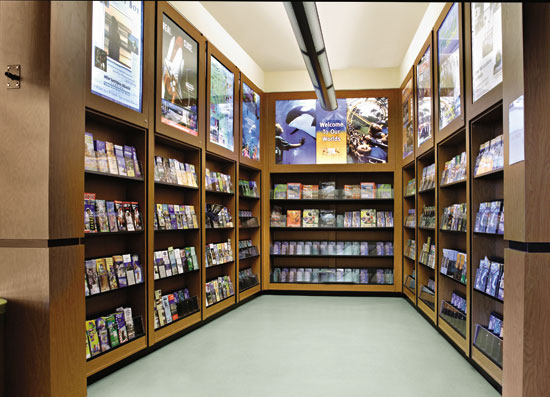Advancements and Applications in Resinous Floors and Walls
Resistance to Chemicals
A major advantage of resinous flooring is its resistance to corrosive chemicals. A manufacturer will typically test for the damaging effects of corrosive chemicals by totally immersing samples of cured flooring in different chemicals for seven days at normal room temperatures. The rated results are categorized by acids, alkalis and salts, and solvents and other chemicals and are available on a manufacturer's data sheet. Manufacturers also test for VOC (volatile organic compound), one of a number of chemicals, including benzene and acetone, that evaporate or vaporize readily and are harmful to human health and the environment.
Durability
Resinous flooring systems have a wide range of durability depending upon materials and configurations. Physical characteristics, such as strength and hardness data, are available for each product from the manufacturer.
They are also crack resistant. Unlike ceramic or quarry tile, resinous systems will not crack or present tripping or cleaning hazards.
Design and Color Palette Versatility
Resinous flooring is available in a range of colors and appearances and can be poured according to custom design specifications.
Low-Cost Life Cycle
While its initial costs are higher than vinyl systems, decorative resinous flooring has lower long-term costs compared with terrazzo, high-grade carpeting, VCT, rubberized terrazzo, and non-formulated vinyl.
 |
| Defining Performance |
Typically a manufacturer will conduct its own performance tests according to American Society for Testing and Materials (ASTM) standards. VOC content (ASTM D-2369, Method E) tests for VOC (volatile organic compound) content. Results are in grams per liter (g/L). An epoxy stain-resistant flake system, for example, could have a VOC content of 34 g/L. Test results for other chemicals are available from the manufacturer. Slip resistance index (ASTM F-1679, F-2508) is directly related to the smoothness of the floor (the smoother the floor the less slip resistance). Measured in ranges from 0 to > 1. The greater the number the more slip resistant. Troweled epoxy mortar system could have a Slip Index of 0.66 when wet. Abrasion resistance (ASTM D-4060 CS-17) is the ability to withstand rolling loads. Abrasion resistance is measured by running a gritty surface across a coating for a selected number of times and determining how much of the coating has been removed. The sample is weighed prior to and after the test. Units are in gram max weight loss. Typical example: 0.03 g for decorative epoxy mortar. Tensile strength (ASTM D-2794) is the resistance of the material from being pulled apart from two opposite forces. Tensile strength is measured in terms of psi (pounds per square inch). Typical example: 1200 psi for a resilient urethane flooring system Compression (ASTM C-579) is the resistance of a material from being compressed to the point of cracking or other failure standard. Compressive strength is measured in psi (pounds per square inch). Typical example: 10,000 psi for a heavyduty troweled epoxy system. |
 |
A layer of aggregate adds color and texture to a moderate- to high-traffic area. Photo courtesy of Stonhard |
 |
Troweled resilient urethane flooring in a YMCA Photo courtesy of Stonhard |









